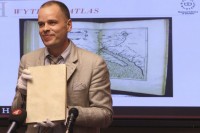 A rare copy of Cornelius van Wytfliet’s Atlas of the New World stolen from Sweden’s Royal Library a decade ago was officially returned during a news conference in New York City Wednesday.
A rare copy of Cornelius van Wytfliet’s Atlas of the New World stolen from Sweden’s Royal Library a decade ago was officially returned during a news conference in New York City Wednesday.
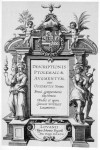 Published in 1597, the Descriptionis Ptolemaicae Augmentum was the first atlas documenting the geography and natural history of the Americas. Belgian cartographer Wytfliet used the writings of geographers José de Acosta and Giovanni Battista Ramusio, among others, to create 19 exceptionally accurate maps of South America, Central America, North America and the Caribbean, among them the first regional map of California ever printed. The book is one of only nine complete copies known to survive.
Published in 1597, the Descriptionis Ptolemaicae Augmentum was the first atlas documenting the geography and natural history of the Americas. Belgian cartographer Wytfliet used the writings of geographers José de Acosta and Giovanni Battista Ramusio, among others, to create 19 exceptionally accurate maps of South America, Central America, North America and the Caribbean, among them the first regional map of California ever printed. The book is one of only nine complete copies known to survive.
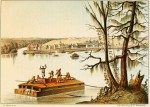 It was stolen by the former head of the library’s manuscript department, Anders Burius, who from the day he was hired in 1995 began to help himself to rare volumes which he would then sell to German auction house Ketterer Kunst. He managed to steal 56 books worth millions of dollars before the thefts were discovered in the spring of 2004. Over time he had gotten careless in his efforts to cover his tracks, so when a Royal Library staffer began searching for a copy of Das Illustrirte Mississippithal, a book of lithographs of the Mississippi River by American artist Henry Lewis published in Dusseldorf, Germany in 1858, she found a single remaining reference proving that the volume had once been in the library even though it had been removed from all the other indices, catalogues and inventories.
It was stolen by the former head of the library’s manuscript department, Anders Burius, who from the day he was hired in 1995 began to help himself to rare volumes which he would then sell to German auction house Ketterer Kunst. He managed to steal 56 books worth millions of dollars before the thefts were discovered in the spring of 2004. Over time he had gotten careless in his efforts to cover his tracks, so when a Royal Library staffer began searching for a copy of Das Illustrirte Mississippithal, a book of lithographs of the Mississippi River by American artist Henry Lewis published in Dusseldorf, Germany in 1858, she found a single remaining reference proving that the volume had once been in the library even though it had been removed from all the other indices, catalogues and inventories.
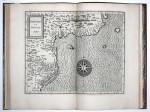 Realizing that only an insider could have removed the book and almost all references to it, the library began a quiet but thorough investigation. They found other books were missing, all of them valuable. In November, they determined that only Burius had the physical access and in-depth knowledge to consistently pick the books with the highest current market values. Management confronted him and he admitted to being the thief. He hoped the library would keep things quiet and settle the matter internally, but of course they called the police.
Realizing that only an insider could have removed the book and almost all references to it, the library began a quiet but thorough investigation. They found other books were missing, all of them valuable. In November, they determined that only Burius had the physical access and in-depth knowledge to consistently pick the books with the highest current market values. Management confronted him and he admitted to being the thief. He hoped the library would keep things quiet and settle the matter internally, but of course they called the police.
On November 7, 2004, Anders Burius was arrested. While in jail he wrote a detailed list of all the books he had stolen from the Royal Library. A subsequent investigation found that he had stolen dozens of books from other libraries starting as early as 1986. He was no collector; he sold them to support his lifestyle of Armani suits, Cuban cigars and Mercedes Benzes. He would steal the books, remove any references to them in the library records, and erase the library marks from the books with a pencil eraser. Then he would sell them in Germany as Charles Fields from Denmark. (John Charles Fields was the Canadian mathematician who founded the Fields Medal, viz. Good Will Hunting.)
The closest Ketterer Kunst got to due diligence was to check for the library stamps he had removed and to make Burius sign a document attesting to his legal ownership of the books. They didn’t even check to see if there was such a person as Charles Fields in Denmark. They just paid him in cash and everyone went on their merry way.
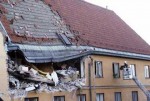 Three weeks after his arrest, Burius’ wife filed for divorce. On December 3rd, the police released him pending a court date. Early in the morning of December 8th, he dragged a mattress into his kitchen, cut the gas tube leading to his oven, then lay down on his mattress and slit his wrists. A random spark from his refrigerator thermostat ignited the gas, setting off a massive explosion which blew out the walls, injured 11 people and forced the evacuation of 44 of his neighbors.
Three weeks after his arrest, Burius’ wife filed for divorce. On December 3rd, the police released him pending a court date. Early in the morning of December 8th, he dragged a mattress into his kitchen, cut the gas tube leading to his oven, then lay down on his mattress and slit his wrists. A random spark from his refrigerator thermostat ignited the gas, setting off a massive explosion which blew out the walls, injured 11 people and forced the evacuation of 44 of his neighbors.
Burius’ body was found under the rubble of his apartment four days later. The medical examiner was unable to determine if he died in the explosion or from the gas or wrist-slitting. Thankfully, nobody else was killed in his last act of reckless selfishness.
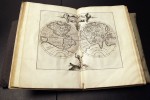 The case was huge news in Sweden, but because the investigation was ongoing, the Royal Library didn’t publish the complete list of stolen books; so dealers and auction houses all over the world were still selling the purloined volumes, unaware of their origins. Wytfliet’s Atlas had been on the market for years and passed through several hands before a Royal Library librarian spotted it in 2011 for sale by New York map dealer W. Graham Arader III of Arader Galleries. Arader, a colorful character who in addition to being a highly successful dealer in antique maps and natural history prints has also been instrumental in helping authorities arrest several thieving dealers and collectors, had bought it from Sotheby’s London in 2003.
The case was huge news in Sweden, but because the investigation was ongoing, the Royal Library didn’t publish the complete list of stolen books; so dealers and auction houses all over the world were still selling the purloined volumes, unaware of their origins. Wytfliet’s Atlas had been on the market for years and passed through several hands before a Royal Library librarian spotted it in 2011 for sale by New York map dealer W. Graham Arader III of Arader Galleries. Arader, a colorful character who in addition to being a highly successful dealer in antique maps and natural history prints has also been instrumental in helping authorities arrest several thieving dealers and collectors, had bought it from Sotheby’s London in 2003.
The Royal Library and Arader determined that it was the stolen copy, so he returned it to Sotheby’s and got his money back. Sotheby’s in turn decided to give the book back to the library. They sent it to New York for the return ceremony where representatives from the Royal Library reclaimed the first of Burius’ stolen treasures. They have now published a complete list of the stolen books (pdf) and registered it with booksellers and Interpol. They are cautiously optimistic that more of the books will be found now.